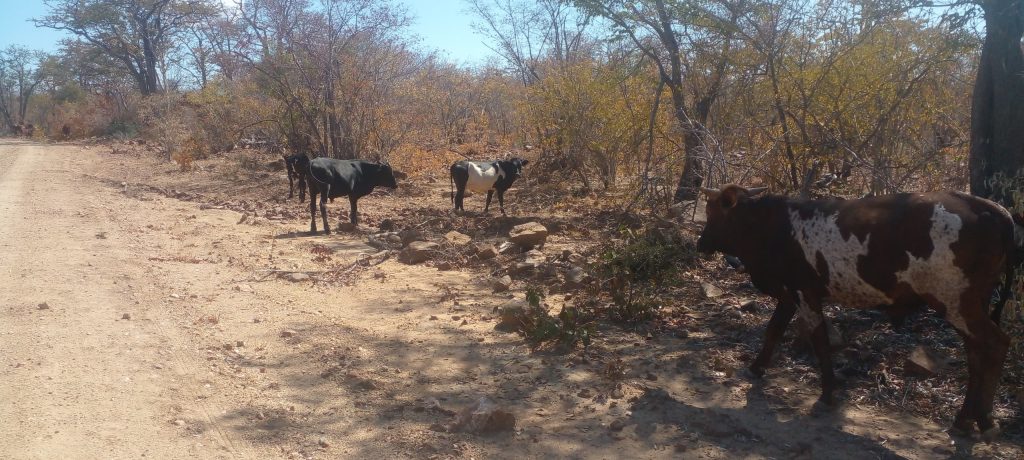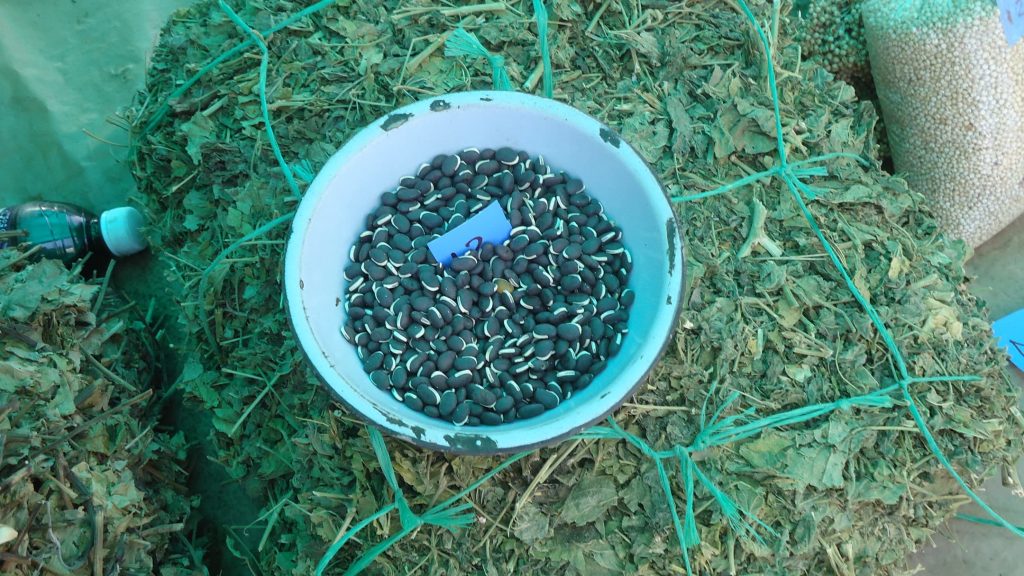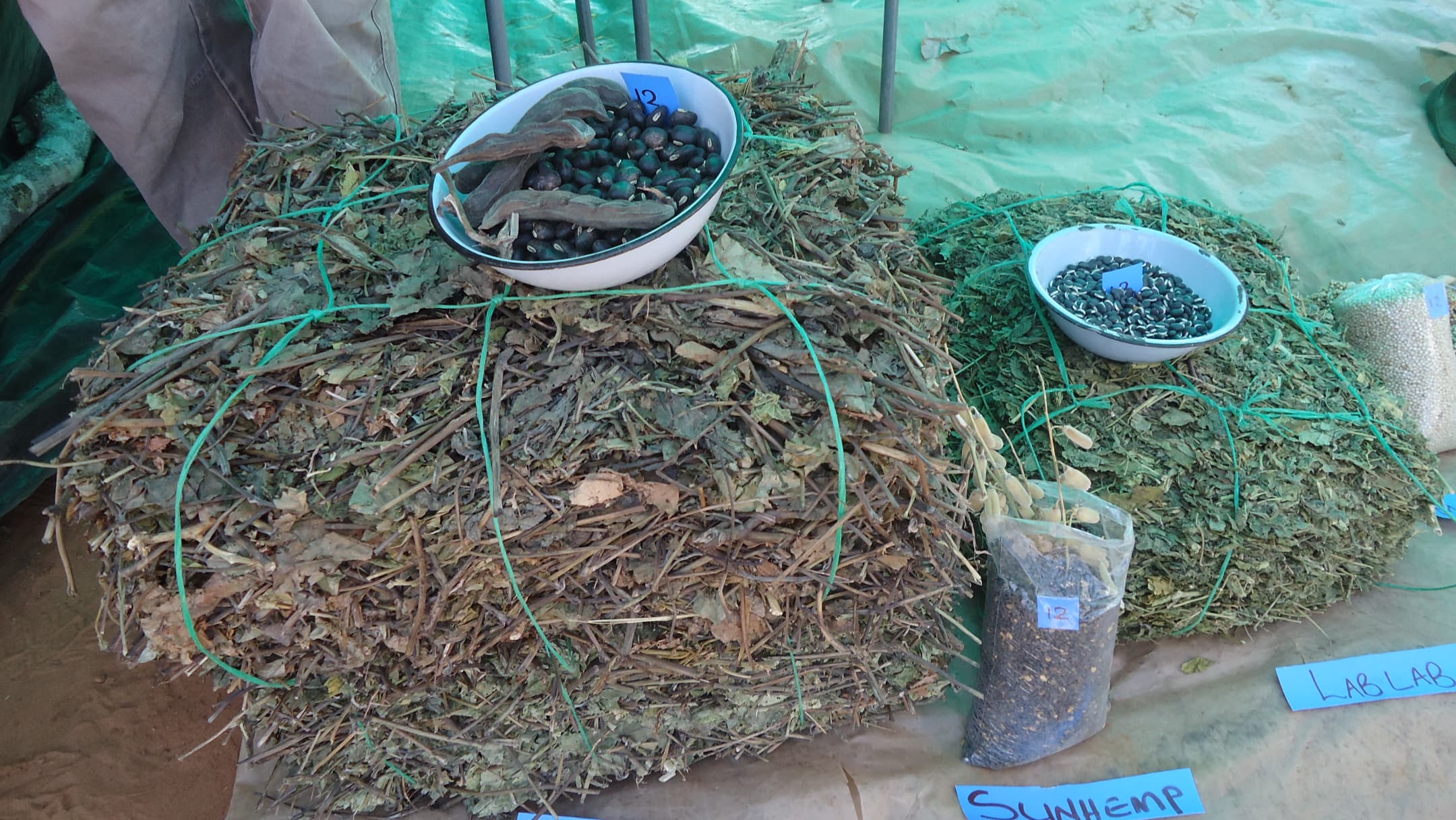Amid the withering mopane trees and scorched shrubs of Kasibo in Hwange district Matabeleland North, a hunched figure moves deliberately through the forest. With practiced hands, 67-year-old Zwela Nyathi plucks dried tree pods and thorny shrub branches, inspecting them with the precision of someone who knows the weight of hunger—if not for himself, then for his cattle.
“These may look like useless sticks to you,” he says, holding up a twig bearing baobab fruit husks, “but they kept my herd alive when the grass died.”
As Zimbabwe reels from another devastating El Niño-induced drought, farmers in Matabeleland North, one of the country’s driest regions, are turning to an unlikely savior: ancient indigenous knowledge passed down through generations.
For Nyathi, that meant collecting pods from trees like acacia, baobab, and mopane, and storing them for months in anticipation of the worst. When the rains failed and the pastures withered, he was ready.
“I lost only two cows out of ten. My neighbors lost almost everything.”
Zwela Nyathi says, his voice steady but tinged with regret
In neighboring Jambezi, another farmer, Lingani Tshuma, has revived the practice of natural fodder collection. The 52-year-old widow says she learned it from her late grandmother.
“Back then, they didn’t have fancy stockfeed,” she laughs. “They had wisdom. When I noticed our pastures drying up in February, I started collecting mopane leaves, velvet beans, cowpea leaves, and baobab pods.”
Tshuma lost only one of her six cows, while her cousin, who didn’t store any fodder, buried four.

Calves forage along a dry roadside—among the few that survived the harsh El Niño-induced drought. | Photo: Fairness Moyana
In the scorching heat of Binga district, also in Matabeleland North, 71-year-old village head Lusyomo Mumpande from Pashu shows how traditional knowledge can help communities withstand climate shocks. As the drought ravaged the region, thousands of cattle died, but Mumpande’s herd of 12 survived largely intact, thanks to a method passed down through generations.
With a keen eye, he forages through the forest, carefully selecting tree pods and drought-resistant shrubs like lablab that many would overlook. These branches and shrubs proved to be lifesavers. He lost only two cows.
“Indigenous knowledge passed on from generation to generation helped save my livestock,” Mumpande says with a smile.
For him, the practice is more than survival; it’s part of his heritage and a measure of the resilience his community has built over generations.
As climate change continues to hit the region, the stories of Nyathi, Tshuma, and Mumpande show how traditional knowledge is helping farmers adapt where official support has fallen short. While modern adaptation strategies often dominate policy discussions, these older practices remain relevant — and in some cases, more effective on the ground.
The previous El Niño season brought Zimbabwe’s worst drought in four decades, nearly eliminating rainfall in the southwestern parts of the country. According to the Agriculture and Rural Development Advisory Service (ARDAS), more than 7,643 cattle died across Matabeleland due to starvation and water scarcity. In Matabeleland North alone, 2,573 livestock deaths were recorded.
The loss goes beyond animals. In rural Matabeleland, livestock are vital economic assets used for plowing, dowries, school fees, and emergency cash. When a farmer loses cattle, a family often slips deeper into poverty.
“Each beast that dies takes a family’s hope with it,” says Lovemore Mhlanga, a community livestock broker in Lupote. “During the drought, cattle prices fell because everyone was selling sick animals. Some were so thin you couldn’t even get meat off them.”
In Hwange and Binga, farmers are shifting away from conventional agricultural calendars and unreliable government forecasts. Instead, they’re turning to ancestral knowledge, watching tree flowering patterns, bird migrations, and insect behavior to anticipate changes in the seasons.
“We used to wait for the radio to tell us when to plant,” says Selia Munkuli, a 63-year-old farmer from Siachilaba village in Binga. “Now we watch the musasa trees. When they start shedding leaves earlier than usual, we know a drought is looming.”
Among the most effective traditional strategies is the practice of stocking natural fodder. As pastures vanish under the blazing sun, farmers harvest wild grasses, tree pods, and other drought-resilient vegetation for storage.
In Dete village, farmers collect pods from acacia, baobab, and mopane trees, along with lablab, velvet beans, and sunhemp. The materials are dried, crushed, and stored in elevated granaries or shade-covered pits to ensure they last.
“Our cattle survived the last drought because we fed them from what we gathered months earlier,” says Naison Tshuma, a livestock farmer. “We no longer wait for government feed. Nature provides.”
Water conservation has also returned as a priority. Rainwater harvesting using carved rock basins is making a comeback, allowing communities to store every precious drop.
Local NGOs and researchers are beginning to take notice. Programs are underway to document and integrate indigenous knowledge into formal climate adaptation strategies.
Studies show that nature-based fodder—such as baobab pods, mopane leaves, and drought-resistant shrubs—provides vital nutrients for livestock. Baobab pods, for example, contain 16–20% protein, calcium, and phosphorus. Mopane leaves also offer high protein content (12–15%) and energy. Drought-resistant shrubs deliver protein, fiber, and minerals, making them ideal as livestock feed.

Lablab seeds, shown here atop dried leaves, are crushed and stored together as nutrient-rich fodder to help livestock survive droughts. | Photo: Fairness Moyana
“What we’re seeing in Hwange and Binga is a grassroots climate movement powered by centuries of lived experience,” says climate researcher Daniel Sithole of Green Shango Trust. “These communities have always been close to nature. Now, they’re showing the world that sustainable adaptation starts with listening to the land.”
One organization, Amalima Loko, has supported the revival of indigenous practices through livestock feed trials and agricultural showcases. Farmers were trained to grow drought-tolerant forages, produce hay, and make home-based feeds. The trials included feeds based on velvet bean (Mucuna pruriens), hyacinth bean (Lablab purpureus), and cowpea (Vigna unguiculata).
The result? Lower production costs and higher livestock value. Average cattle weights increased from 400 kg to 520 kg.
Mkhunjulelwa Ndlovu, acting provincial director of the Agriculture and Rural Development Advisory Service (ARDAS), praises the efforts, noting their alignment with government policies that promote natural, sustainable innovations in livestock nutrition and environmental protection.
“Each region has its own approach. But the revival of indigenous knowledge is widespread and making a clear impact.”
Mkhunjulelwa Ndlovu
The Matopos Research Station’s nutrition department is also playing a role, testing farmer-created feed formulations and offering technical guidance. This has led to increased use of veld products in livestock feeds.
“By integrating indigenous knowledge into modern livestock practices, farmers are enhancing resilience while honoring ancestral wisdom,” says Sithole. “Nature-based fodder promotes sustainability and reduces environmental impact.”
Back in Kasibo, Nyathi watches his surviving cows graze on scattered leaf piles. He stoops to gather another bundle of branches, already preparing for the next dry season.
“I don’t know if the rains will come,” he says. “But I know this: our ancestors taught us how to survive. We just need to listen.”

